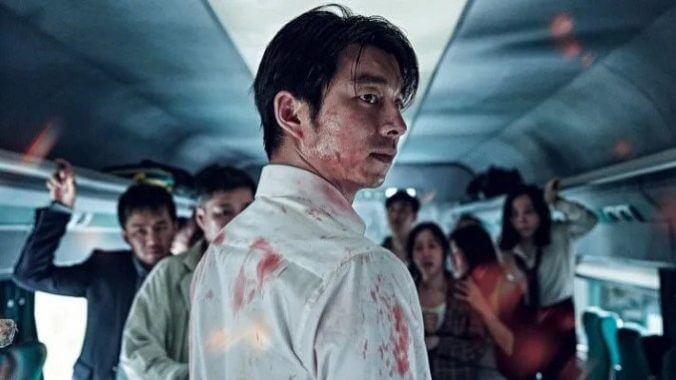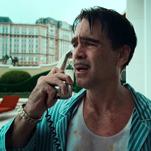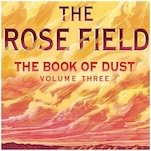The 40 Best Horror Movies on Netflix Right Now (October 2025)

Assessing the quality of offerings available from Netflix in 2025, it quickly becomes clear that their horror library is a real mixed bag. As competing services, and especially genre-specific ones such as Shudder, continue to expand their horror movie collections, it’s harder and harder for Netflix to project any sense of comprehensiveness, and its library becomes more static and reliant upon Netflix Originals on a monthly basis. At various points in the last few years, for instance, Netflix could boast movies like The Shining, The Silence of the Lambs or Young Frankenstein, along with recent indie greats like The Witch or The Descent. All of those films are now gone—usually replaced by low-budget, direct-to-VOD films with suspiciously similar one-word titles, like Demonic, Desolate and Incarnate.
Still, there are quality films to be found here, typically of the modern variety, from comedies like The Babysitter, to more obscure (and disturbing) titles such as The Wailing, Creep, Apostle or newer films like His House and the Fear Street trilogy. Don’t expect to find many franchise staples in the mold of Halloween or Friday the 13th, but don’t sleep on The Haunting of Hill House, Cabinet of Curiosities or Fall of the House of Usher, either. They’re not technically movies, but they’re impossible to leave off this list if you’re looking for quality horror content.
You may also want to consult the following horror-centric lists:
The 100 best horror films of all time.
The 100 best vampire movies of all time.
The 50 best zombie movies of all time.
The 50 best movies about serial killers.
The 50 best slasher movies of all time
The 50 best ghost movies of all time.
The best horror movies streaming on Amazon Prime.
The best horror movies streaming on Hulu.
The best horror movies streaming on Shudder.
1. Jaws
Year: 1975
Director: Steven Spielberg
Stars: Roy Scheider, Richard Dreyfuss, Robert Shaw, Lorraine Gary, Murray Hamilton
Rating: PG
Is Jaws a horror film? For those who worry that it’s “not safe to go back in the water,” then most certainly it is. But regardless of how you’d classify it, there’s no denying that Jaws is anything but brilliant, one of Spielberg’s great populist triumphs, alongside the likes of Jurassic Park and E.T., but leaner and less polished than either,. Much has been made over the years of how Jaws as a film really benefits from the technical issues that plagued its making; the story originally called for more scenes featuring the mechanical shark “Bruce,” but the constantly malfunctioning animatronic forced the director to cut back, which ended up maximizing each appearance’s impact. The first time that Brody (Roy Scheider) sees the literal “jaws” of the beast while absentmindedly throwing chum into the water is one of the great, scream-inducing moments in cinema history, and it’s a shock that has rarely been matched in any other shark movie since. Likewise with the death of Quint (Robert Shaw), whose mad scramble to avoid those gnashing teeth is the kind of thing that created its very own sub-genre of children’s nightmares. Ultimately, Jaws is a great film via memorable characters, but a scary film care of novelty and perfect execution. —Jim Vorel
2. 28 Days Later
Year: 2002
Director: Danny Boyle
Stars: Cillian Murphy, Naomie Harris, Christopher Eccleston, Megan Burns, Brendan Gleeson
Rating: R
The classical zombie film was effectively dead by the time 28 Days Later came along in 2002 and completely reanimated the concept. (And yes, we all know that the “infected” in this film aren’t technically zombies, so please don’t feel that you have to remind us.) The definition of “zombies” is fluid, and always expanding. Here, they’re living rather than dead, poor souls infected by the “rage virus” that makes them run amok, tearing through whatever living thing they see. It’s a modernization of the same fears that powered Romero’s ghouls—unthinking assailants who will stop at nothing and are now more dangerous than ever because they move at a full-on sprint. It’s hard to overstate how big a quantum leap that mobility was for the zombie genre–the early scenes of 28 Days Later where Jim (Cillian Murphy) tries to navigate a deserted London in hospital scrubs, chased by fast-moving zombies, did for this genre what Scream did for the slasher revival, sans the humor. Indeed, 28 days Later is a dead-serious horror film, marking a return to seeing these types of creatures as a legitimate, frightening threat. It’s indicative of another trend of the 2000s, which was to reimagine the classic rules of zombie cinema to fit the needs of the film. The Zack Snyder Dawn of the Dead remake replicated a lot of this film’s DNA when it was released two years later, although it marries the concept with the more traditional Romero ghoul. Together, those two movies gave birth to the concept of the 21st-century serious zombie film. —Jim Vorel
3. Train to Busan
Year: 2016
Director: Yeon Sang-ho
Stars: Gong Yoo, Ma Dong-seok, Jung Yu-mi, Kim Su-an, Kim Eui-sung, Choi Woo-shik, Ahn So-hee
Rating: N/A
Love them or hate them, zombies are still a constant of the horror genre, dependable enough to set your conductor’s watch by. And although I’ve probably seen enough indie zombie films at this point to eschew them from my viewing habits for the rest of my life, there is still usually at least one great zombie movie every other year. In 2016, that was Train to Busan, a film that has since been added to our list of the “50 Best Zombie Movies of All Time”:https://www.pastemagazine.com/articles/2016/09/the-50-best-zombie-movies-of-all-time.html. There’s no need for speculation: Train to Busan would undoubtedly have made the list. This South Korean story of a career-minded father attempting to protect his young daughter on a train full of rampaging zombies is equal parts suspenseful popcorn entertainment and genuinely affecting family drama. It concludes with several action elements that I’ve never seen before, or even considered for a zombie film, and any time you can add something truly novel to the genre of the walking dead, then you’re definitely doing something right. With a few memorable, empathetic supporting characters and some top-notch makeup FX, you’ve got one of the best zombie movies of the past decade. —Jim Vorel
4. The Texas Chain Saw Massacre
Year: 1974
Director: Tobe Hooper
Stars: Marilyn Burns, Paul A. Partain, Edwin Neal, Jim Siedow, Gunnar Hansen
Rating: R
One of the most brutal mainstream horror films ever released, The Texas Chain Saw Massacre, based on notorious Wisconsin serial killer Ed Gein, resembles art-house verité built on the grainy physicality of its flat Texas setting. Plus, it introduced the superlatively sinister Leatherface, the iconic chainsaw-wielding giant of a man who wears a mask made of human skin, whose freakish sadism is upstaged only by the introduction of his cannibalistic family with whom he resides in a dilapidated house in the middle of the Texas wilderness, together chowing on the meat Leatherface and his brothers harvest, while Grandpa drinks blood and fashions furniture from victims’ bones. Still, The Texas Chain Saw Massacre might not be the goriest horror film ever made, but as an imaginal excavation of the subterranean anxieties of a post-Vietnam rural American populace, it’s pretty much unparalleled. Twisted, dark and beautiful all at once, it careens through a wide variety of tones and techniques without ever losing its singular intensity. (And there are few scenes in this era of horror with more disturbing sound design than the bit where Leatherface ambushes a guy with a single dull hammer strike to the head before slamming the metal door shut behind him.) –Rachel Haas and Brent Ables
5. His House
Year: 2020
Director: Remi Weekes
Stars: Wunmi Mosaku, Sope Dirisu, Matt Smith
Rating: NR
Nothing sucks the energy out of horror than movies that withhold on horror. Movies can scare audiences in a variety of ways, of course, but the very least a horror movie can be is scary instead of screwing around. Remi Weekes’ His House doesn’t screw around. The film begins with a tragedy, and within 10 minutes of that opening handily out-grudges The Grudge by leaving ghosts strewn on the floor and across the stairs where his protagonists can trip over them. Ultimately, this is a movie about the inescapable innate grief of immigrant stories, a companion piece to contemporary independent cinema like Jonas Carpignano’s Mediterranea, which captures the dangers facing immigrants on the road and at their destinations with brutal neorealist clarity. Weekes is deeply invested in Bol and Rial as people, in where they come from, what led them to leave, and most of all what they did to leave. But Weeks is equally invested in making his viewers leap out of their skins. —Andy Crump
6. The Haunting of Hill House
Year: 2018
Director: Mike Flanagan
Stars: Henry Thomas, Michiel Huisman, Carla Gugino, Elizabeth Reaser, Oliver Jackson-Cohen, Kate Siegel, Victoria Pedretti
The aesthetic of The Haunting of Hill House makes it work not only as horror TV, but also as a deft adaptation of Shirley Jackson’s classic novel. The monsters, ghosts, and things that go bump on the wall are off-screen, barely shown, or obscured by shadow. The series even goes back to some of the first film adaptation’s decisions, in terms of camera movement and shot design, in order to develop uneasiness and inconsistency. Well, maybe “inconsistency” is the wrong word. The only thing that feels truly inconsistent while watching it is your mind: You’re constantly wary of being tricked, but the construction of its scenes often gets you anyway. By embracing the squirm—and the time necessary to get us to squirm rather than jump—The Haunting of Hill House is great at creating troubling scenarios, and even better about letting us marinate in them. —Jacob Oller
7. The Fall of the House of Usher
Year: 2023
Director: Mike Flanagan
Stars: Bruce Greenwood, Mary McDonnell, Carla Gugino, Kate Siegel, Henry Thomas, Zach Gilford, Carl Lumbly, Mark Hamill
No one else in this space is doing what Mike Flanagan does, mining our deepest emotional fears and unspoken desires for the sort of real-life nightmare fuel that’s much, much scarier than any monster under the bed. Through stories that wrestle with everything from questions of faith and belief to falling in love and what it means to truly die, Flanagan’s deeply human horror universe is truly something beautiful to behold.
Though The Fall of the House of Usher is primarily grounded in Edgar Allan Poe’s titular short story of the Usher siblings, Flanagan deftly mixes in elements from many of the author’s other famous works, including “The Tell-Tale Heart,” “The Raven,” “The Murders in the Rue Morgue,” “The Masque of the Red Death,” “The Black Cat,” and more. Episodes are freely littered with Poe references large and small, from character names to full-on poetry recitations, and the series’ larger story reflects the author’s lifelong fascination with themes of guilt, death, paranoia, obsession, and delusion. One part horror-tinged Succession knockoff and one part modern day morality play, The Fall of the House of Usher is both a darkly comedic excoriation of the uber-rich and a slow-moving emotional car crash that explores the dysfunction at the heart of a family that’s losing its members one by one. —Lacy Baugher Milas
8. Midnight Mass
Year: 2021
Director: Mike Flanagan
Stars: Zach Gilford, Kate Siegel, Kristin Lehman, Samantha Sloyan, Henry Thomas, Hamish Linklater
On Midnight Mass’ Crockett Island, every islander feels rife with misfortune. The recent oil spill nearly annihilated the fish supply, tanking the island’s local fishing economy. Their homes splinter and peel in neglect to the ocean’s elements. The majority of residents have fled the island for lack of opportunity, leaving a paltry few behind. Only two ferries can take them to the mainland. Hope runs in short supply—and a major storm brews on the horizon.
Everything beyond that for this seven-episode series is a true spoiler, but what can be said is that even with its dabblings in the supernatural, Midnight Mass (created by The Haunting’s Mike Flanagan, in his most recent collaboration with Netflix), is a show that burrows inwards instead of outwards. With both the physical claustrophobia of Crockett’s setting and the internal suffering of characters placed in center stage, Midnight Mass concerns itself with horrors within: addictive tendencies, secret histories, and questions of forgiveness and belief. At one glance, it’s a series that’s mined Catholic guilt for gold. In another, it’s a measured, yet spooky take on group psychology, the need for faith in sorrow, and the ethics of leadership with such vulnerable followers, weighing whether these impulses represent human goodness, evil, or simply nothing at all.
“Blessed are those who have not seen and have believed.” Midnight Mass offers a chance for anyone to be doubting Thomas or true believer. What difference is a miracle from a supernatural event, anyway? —Katherine Smith
9. Creep
Year: 2014
Director: Patrick Brice
Stars: Mark Duplass, Patrick Brice
Rating: R
Creep is a somewhat predictable but cheerfully demented little indie horror film, the directorial debut by Brice, who also released this year’s The Overnight. Starring the ever-prolific Mark Duplass, it’s a character study of two men—naive videographer and not-so-secretly psychotic recluse, the latter of which hires the former to come document his life out in a cabin in the woods. It leans entirely on its performances, which are excellent. Duplass, who can be charming and kooky in something like Safety Not Guaranteed, shines here as the deranged lunatic who forces himself into the protagonist’s life and haunts his every waking moment. The early moments of back-and-forth between the pair crackle with a sort of awkward intensity. Anyone genre-savvy will no doubt see where it’s going, but it’s a well-crafted ride that succeeds on the strength of chemistry between its two principal leads in a way that reminds me of the scenes between Domhnall Gleeson and Oscar Isaac in Ex Machina. —Jim Vorel
10. I’m Thinking of Ending Things
Year: 2020
Director: Charlie Kaufman
Stars: Jessie Buckley, Jesse Plemons, Toni Collette, David Thewlis
Rating: R
Many viewers will think of ending I’m Thinking of Ending Things not long after it’s started. A cross-dissolve cascade of crude shots details the interior of a farmhouse or an apartment, or the interior of an interior. A woman we have not yet seen is practically mid-narration, telling us something for which we have no context. It feels wrong, off-putting. Something is not right. This is not how movies are supposed to work. Finally we see the woman, played brilliantly by Jessie Buckley. She is standing on the street as puffy snowflakes start to fall, like we’re within a 3-D snow globe with her. She looks up at a window a couple stories up. We see an old man looking down out of a window. We see Jesse Plemons looking down out of a window. We see Jesse Plemmons in the next shot picking up Jessie Buckley in his worn car. The movie music twinkles and swirls. Jessie Buckley’s Lucy or Lucia or Amy is thinking of ending things with Jesse’s Jake. Things aren’t going to go anywhere good, seems to be the reasoning. Jake drives the car and sometimes talks; his behaviors seem fairly consistent until they’re not, until some gesture boils up like a foreign object from another self. Louisa or Lucy is forthcoming, a fountain of personality and knowledge and interests. But sometimes she slows to a trickle, or is quiet, and suddenly she is someone else who is the same person but perhaps with different memories, different interests. Sometimes she is a painter, sometimes a physicist, sometimes neither. Jessie and Jesse are great. Their performances and their characters are hard to describe. The best movie of 2020 is terrible at being a “movie.” It does not subscribe to common patterns, rhythms, or tropes. It doesn’t even try to be a great movie, really, it simply tries to dissect the life of the mind of the other, and to do that by any cinematic means possible. The self-awareness of the film could have been unbearable, except awareness (and our fragmentary experience of it) is so entirely the point of everything that the film is wrapped up within and that is wrapped up within it. To say the film accepts both the beauty and ugliness of life would be a platitude that the film itself rejects. To say that “love conquers all,” even moreso. But these false truths flit in and about the film’s peripheral vision: illusions or ghosts, but welcome ones. —Chad Betz
11. Cabinet of Curiosities
Year: 2022
Directors: Guillermo Navarro, David Prior, Jennifer Kent, others
Stars: Tim Blake Nelson, Andrew Lincoln, Essie Davis, F. Murray Abraham, others
Rating: NR
In first approaching Netflix’s new Cabinet of Curiosities, it’s natural to wonder how much of a Guillermo del Toro project this really is. The horror anthology series is volunteered by the streaming service as “a collection of the Oscar-winning filmmaker’s personally curated stories, described as both equally sophisticated and horrific,” and del Toro steps into the host role himself, pulling forth trinkets from the titular cabinet to introduce each tale. But can the actual segments stand up to their association with a beloved director? Are the two episodes that GDT had a hand in writing enough to put his stamp on the series? And can the artistry of those other episodes reflect a similar level of virtuosity?
To get right to the point: I needn’t have worried. Cabinet of Curiosities is a genuinely gorgeous collection of tales, featuring some of the most impressive visuals, production design and general cinematic craftsmanship that has been seen in the streaming world in recent memory. Its tales are often on the somewhat conventional side, but they succeed through sheer filmmaking talent and professionalism, guided by the hands of some of the genre’s very best talents. This is the rare case where an anthology series can tell me that the luminary of a host/producer personally approved of the output of all of these filmmakers, and I truly believe it. Watching these episodes, I can imagine del Toro smiling in approval. —Jim Vorel
12. Bram Stoker’s Dracula
Year: 1992
Director: Francis Ford Coppola
Stars: Gary Oldman, Keanu Reeves, Winona Ryder, Anthony Hopkins
Rating: R
Based on the 1897 Gothic horror classic, Francis Ford Coppola’s unabashedly over-the-top adaptation is at times as chuckle-worthy as it is impressive. The period detail and production design is sumptuous, and the traditional, non-CGI special effects—a deliberate nod by Coppola to the novel’s turn-of-the-century origins, which coincided with early filmmaking—are the stuff of lavish spectacle. Be it Gary Oldman (relishing the role, and some masterful makeup) as the soulful but ruthless bloodsucker, Winona Ryder as his long-lost love, or Anthony Hopkins as the equally storied Dr. Van Helsing, nothing about the film or its performances is subtle—and that’s before we get to Keanu Reeves. Try as he might as the British lawyer fiancé to Ryder’s Mina, Reeves can’t help but flail onscreen, a Ted out of water among an ensemble that also includes Richard E. Grant, Cary Elwes and a marvelous Tom Waits as R.M. Renfield. When Coppola’s overwrought romantic vision works, it’s intoxicating. When it doesn’t, it’s an operatic circle jerk, albeit a still riveting one. —Amanda Schurr
13. Creep 2
Year: 2017
Director: Patrick Brice
Stars: Mark Duplass, Desiree Akhavan, Karan Soni
Rating: N/A
Creep was not a movie begging for a sequel. About one of cinema’s more unique serial killers—a man who seemingly needs to form close personal bonds with his quarry before dispatching them as testaments to his “art”—the 2014 original was self-sufficient enough. But Creep 2 is that rare follow-up wherein the goal seems to be not “let’s do it again,” but “let’s go deeper”—and by deeper, we mean much deeper, as this film plumbs the psyche of the central psychopath (who now goes by) Aaron (Mark Duplass) in ways both wholly unexpected and shockingly sincere, as we witness (and somehow sympathize with) a killer who has lost his passion for murder, and thus his zest for life. In truth, the film almost forgoes the idea of being a “horror movie,” remaining one only because we know of the atrocities Aaron has committed in the past, meanwhile becoming much more of an interpersonal drama about two people exploring the boundaries of trust and vulnerability. Desiree Akhavan is stunning as Sara, the film’s only other principal lead, creating a character who is able to connect in a humanistic way with Aaron unlike anything a fan of the first film might think possible. Two performers bare it all, both literally and figuratively: Creep 2 is one of the most surprising, emotionally resonant horror films in recent memory. —Jim Vorel
14. 28 Years Later
Year: 2025
Director: Danny Boyle
Stars: Jodie Comer, Aaron Taylor-Johnson, Jack O’Connell, Alfie Williams, Ralph Fiennes
Rating: R
Those who were led to a variety of zombie-slaying, post-apocalyptic hellscapes by the original 28 Days Later may be taken aback by how much of Boyle’s film, reuniting him with the original’s screenwriter Alex Garland, takes a more coming-of-age shape. After a harrowing opening flashback that provides another glimpse into the initial virus outbreak, the movie jumps forward, again using its title as an on-screen time marker. Around 2030, a pocket of seemingly thriving society has formed on an island off the English coast, accessible by a single narrow causeway at low tide and fortified with far-seeing guard posts. 13-year-old Spike (Alfie Williams) is about to undergo the island’s coming-of-age ritual: Accompanied by his father Jamie (Aaron Taylor-Johnson), he will travel to the mainland for the first time and put his long-practiced zombie-killing skills to use.
Spike seems less worried about the rage-virus hordes than his otherwise-afflicted mother Isla (Jodie Comer), bedridden and prone to memory loss and disorientation. He becomes increasingly determined to help her, as a rift grows between his loving yet sometimes intractable father. To offer more in the way of plot details might spoil the movie’s strange, beguiling combination of tripwire-tight suspense and episodic wandering. Suffice to say that some of the most obvious candidates for set pieces do not come to pass, and that the film occasionally resembles an eerie fairy tale. —Jesse Hassenger
15. Smile
Year: 2022
Director: Parker Finn
Stars: Sosie Bacon, Kyle Gallner
Rating: R
Smile may not impress true students of the horror genre, adherents to the dark tradition, but for novices and the easily scared or sensitive, it’s a gruesome and macabre thrill ride that tries to talk about trauma as its characters struggle to unpack it. The movie cycles between and draws on the traditions of recent “elevated” horror as well as sensational exploitation films of the later 20th century. Its main thrust is as a curse movie, reminiscent of mid-00s to 2010s films such as The Grudge and It Follows, while also sharing some of its vibe and structure with psychological-supernatural horror like Daniel Isn’t Real, another movie about trauma activating a supernatural violent streak. Smile is largely a movie about dread, hopelessness and the inability to escape the inevitable. It succeeds in building those feelings while thriving on jump scares, of which there are many. Of course, to build maximum tension, the camera and music sometimes lead us to think one is coming that doesn’t. For some viewers, this might wear out its welcome, but Smile had me on the ropes throughout. Some silliness notwithstanding, Smile successfully builds and reproduces dread. While it uses trauma as a narrative theme, it doesn’t feel completely exploitative or shallow. Because the haunting is unambiguously happening, the trauma discussion doesn’t feel like a red herring but rather a parallel conversation. While genre veterans may effectively point at what and where it borrows, Smile will positively terrify casual fans of horror. It’s creepy, dreadful and jumpy.—Kevin Fox, Jr.
16. Fear Street Part 1: 1994
Year: 2021
Director: Leigh Janiak
Stars: Kiana Madeira, Olivia Scott Welch, Benjamin Flores Jr., Julia Rehwald, Fred Hechinger, Maya Hawke
Rating: R
The first film in Netflix’s trilogy of R.L. Stine Fear Street adaptations quickly announces itself as a far more vicious and bloody beast than any of the family friendly Goosebumps installments of recent years, successfully carving out its own place in the modern meta-slasher canon while hinting at an exciting conclusion to come. 1994 garbs itself in slasher history, being particularly referential of Scream while also including numerous allusions to much more obscure ‘80s slashers such as Intruder, but it simultaneously (and cleverly) distracts the audience from some of its deeper mysteries, to be explored more fully in Fear Street: 1978 and Fear Street: 1666. What we’re left with is a film that lays its mythology out nicely, buoyed both by engaging supporting characters and cinematic violence that is significantly more grisly than audiences are likely to expect. Suffice to say, the kills of Fear Street aren’t messing around, and once that bread slicer makes an appearance, your jaw is likely to drop. Sequels 1978 and 1666, meanwhile, keep up just enough momentum to complete the ambitious trilogy. —Jim Vorel
17. Gerald’s Game
Year: 2017
Director: Mike Flanagan
Stars: Carla Gugino, Bruce Greenwood
Rating: N/A
Director Mike Flanagan’s Gerald’s Game trims fat, condenses and slims, stripping away some of the odder quirks of Stephen King’s novel to get at the heart of themes underneath. The result is a tense, effective thriller that goes out of its way to highlight two strong actors (Bruce Greenwood and Carla Gugino) in an unfettered celebration of their craft. This is nothing new for Flanagan, whose recent output in the horror genre has been commendable. It’s hard to overlook some of the recurring themes in his work, beginning with 2011’s Absentia and all the way through the wildly imaginative Oculus, Hush and Ouija: Origin of Evil. Every one of these films centers around a strong-willed female lead, as does Gerald’s Game. Is this coincidence? Or is the director drawn to stories that reflect the struggle of women to claim independence in their lives by shedding old scars or ghosts, be they literal or figurative? Either way, it made Flanagan an obvious fit for Gerald’s Game, an unassuming, overachieving little thriller that is blessed by two performers capable of handling the lion’s share of the dramatic challenges it presents. —Jim Vorel
18. Oats Studio – Vol. 1
Year: 2017
Director: Neill Blomkamp
Stars: Sigourney Weaver, Carly Pope, Dakota Fanning, Steve Boyle
Rating: NR
Originally released on YouTube throughout 2017, this is a collection of experimental (but well budgeted) sci-fi and horror short films from District 9 director Neill Blomkamp, all of which seem like seeds for potential feature film projects. Oats Studio was a project conceived by Blomkamp to do practical VFX testing while also fleshing out some of his crazier ideas, and each one of the major projects within it is very impressive in its own way. Sci-fi feature Rakka imagines an Earth overrun by telepathic reptilian aliens, as human survivors carry on a desperate and seemingly futile resistance, while Firebase pits a soldier against a reality warping “River God” in a southeast Asian military conflict. The true star of the show, though, is perhaps the pure horror of Zygote, in which Dakota Fanning plays a researcher on the run from a truly hideous creature that has taken over her facility, with heavy vibes of The Thing and last year’s PC game Carrion. The creature of Zygote, with its dozens of borrowed human limbs, is perhaps one of the most demented monsters we’ve seen in the horror world in recent memory, which means this short film really deserves to be seen by a bigger audience. —Jim Vorel
19. Apostle
Year: 2018
Director: Gareth Evans
Stars: Dan Stevens, Lucy Boynton, Mark Lewis Jones, Bill Milner, Michael Sheen
Rating: NR
After the first two entries of The Raid made him a monolithic figure among action movie junkies, Apostle functions as the wider world’s introduction to the visceral filmmaking stylings of Welsh director Gareth Evans. Where his first films almost had the aesthetic of a videogame come to life—they’re about as close to a big screen adaptation of Streets of Rage as you’re ever going to find—Apostle might as well represent Evans’ desire to be taken seriously as a visual director and auteur. To do so, he’s explored some well-trodden ground in the form of the rural “cult infiltration movie,” making comparisons to the likes of The Wicker Man (or even Ti West’s The Sacrament) inevitable. However, Apostle forces its way into the year-end conversation of 2018’s best horror cinema through sheer style and verve. Every frame is beautifully composed, from the foreboding arrival of Dan Stevens’ smoldering character at the island cult compound, to the fantastically icky Grand Guignol of the third act, in which viscera flows with hedonistic abandon. Evans knows exactly how long to needle the audience with a slow-burning mystery before letting the blood dams burst; his conclusion both embraces supernatural craziness and uncomfortably realistic human violence. Gone is the precision of combat of The Raid, replaced by a clumsier brand of wanton savagery that is empowered not by honor but by desperate faith. Evans correctly concludes that this form of violence is far more frightening. —Jim Vorel
20. The Platform
Year: 2019
Director: Galder Gaztelu-Urrutia
Stars: Iván Massagué, Zorion Eguileor, Antonia San Juan, Emilio Buale Coka, Alexandra Masangkay
Rating: NR
The Platform benefits immensely from the strength of its simple, high-concept premise and all the superfluous information that is withheld from the viewer. It doesn’t matter that we don’t know why exactly people are placed into this diabolical, vertical prison structure, in which the only sustenance arrives once a day in the form of a steadily descending, increasingly gross stone slab piled high with perishables. Nor do we really need to know how this apparent social experiment operates, although the repeated glimpses we get at cooks slaving over perfect dishes to be sent down to the doomed convicts is no doubt designed to needle at our curiosity. What matters is that we observe the differences in human reaction to this plight—the ways that different personalities react to adversity with an “us or them” mentality, or a predatory hunger, or a spontaneous drive toward self-sacrificing altruism. The fact that the position of the prisoners is constantly in flux is key—it gives them both a tangible reason to be the change they want to see in their world, and an almost impossible temptation to do the exact opposite out of distrust of their neighbors. One expects a nihilistic streak here, and you won’t be disappointed—but there’s a few glimmers of hope shining through the cracks as well. Just enough, perhaps, to twist the knife that much deeper. —Jim Vorel
21. Cargo
Year: 2018
Directors: Yolanda Ramke, Ben Howling
Stars: Martin Freeman, Simone Landers, Anthony Hayes, David Gulpili, Susie Porter, Caren Pistorius
Rating: NR
We’ve had enough takes on worldwide zombie apocalypses to last undead enthusiasts long through, well, a worldwide zombie apocalypse. Of those takes, few are inspired, a few more are watchable though workmanlike and most are dreck, whether in TV or movie form. Cargo, a collaborative directing effort between Yolanda Ramke and Ben Howling, falls somewhere in between “inspired” and “workmanlike,” which is to say it’s well worth seeking out on Netflix if you’ve a powerful need to watch twitching, walking corpses menace a family trying to survive while isolated in Australia’s Outback. Martin Freeman plays Andy, stubborn husband to his wife, Kay (Susie Porter), and loving dad to their daughter, Rosie; he’s piloting a houseboat to safer shores, or that’s the hope. Then Kay takes a zombie bite, forcing a change of plans and setting them down the path to ruin and tragedy. For a certain kind of horror purist, Cargo denies the expectations of the genre. It’s not an especially scary movie. It is, however, a moody, atmospheric movie, replacing scares with a nearly overwhelming sense of sadness. If that’s not enough for you, then at least be sated by the excellent FX work. Here, zombies present as victims of debilitating illness: A waxen, carious fluid seeps from their eyes and mouths, which is suitably nauseating in the stead of workaday splatter. All the same, Cargo is never half as stomach-churning as it is simply devastating. —Andy Crump
22. Under the Shadow
Year: 2016
Director: Babak Anvari
Stars: Narges Rashidi, Avin Manshadi, Bobby Naderi, Ray Haratian, Arash Marandi
Rating: PG-13
For most of the film, Babak Anvari is crafting a stifling period drama, a horror movie of a different sort that tangibly conveys the claustrophobia of Iran during its tumultuous post-revolution period. Anvari, himself of a family that eventually fled the Ayatollah’s rule, has made Under the Shadow as statement of rebellion and tribute to his own mother. It’s a distinctly feminist film: Shideh (Narges Rashidi) is cast as the tough heroine fighting back against greater hostile forces—a horror movie archetype that takes on even more potency in this setting. Seeing Shideh defy the Khomeini regime by watching a Jane Fonda workout video, banned by the state, is almost as stirring as seeing her overcome her personal demons by protecting her child from a more literal one. —Brogan Morris
23. Cam
Year: 2018
Director: Daniel Goldhaber
Stars: Madeline Brewer, Patch Darragh, Melora Walters, Devin Druid, Imani Hakim, Michael Dempsey
Rating: NR
As so many films in 2018 have shown us, the identities we create online—that we digitally design, foster and mature, often to the detriment of whatever we have going on IRL—will inevitably surpass us. The horror of Daniel Goldhaber’s Cam, based on the Isa Mazzei’s script (in turn, based on her real experiences as a sex worker), is in this loss: that no one is ever truly in control of these fabricated identities; that the more real they become, the less they belong to the person most affected. Welcome Alice (Madeline Brewer), an ambitious camgirl who compensates for the exhausting rigor of online popularity (and, therefore, economic viability) with gruesome stunts and a rigorous set of principles dictating what she will, and won’t, do in her capacity as female fantasy. She’s successful, tossing funds to her mom (Melora Walters) and brother (Devin Druid) without being totally honest about her job, but she could be more successful, trying whatever she can (within reason) to scale the ranking system enforced by the site she uses to broadcast her shows. With dexterous ease, Mazzei’s script both introduces the exigencies of camgirl life while never stooping to judge Alice’s choice of employment, contextualizing an inevitable revelation to her family not as one of embarrassment, but as an impenetrable morass of shame through which every sex worker must struggle to be taken seriously. So much so that when someone who looks exactly like Alice—who operates under her screen name but is willing to do the things Alice once refused—gains leaps and bounds in the camgirl charts, Goldhaber and Mazzei derive less tension from the explanation and discovery of what’s really going on rather than the harsh truth of just how vulnerable Alice is—and we all are—to the cold, brutal, indifferent violence of this online world we’ve built for ourselves. —Dom Sinacola
24. The Ritual
Year: 2017
Director: David Bruckner
Stars: Rafe Spall, Arsher Ali, Robert James-Collier, Sam Troughton
Rating: NR
A prime example of what might be termed the “bro horror” subgenre, The Ritual’s characters are a band of lifelong mates united in mourning a friend who has recently been killed in a brutal liquor store robbery. Luke (Rafe Spall) is the member of the group who shoulders the greatest burden of guilt, being the only one who was in the store at the time, paralyzed with indecision and cowardice while he watched his friend die. The other members clearly blame Luke for this to varying degrees, and one senses that their decision to journey to Sweden for a hiking trip deep into the wilderness is less to honor their dead friend’s memory, and more to determine if their bond can ever be repaired, or whether the recrimination stemming from the death is insurmountable. Where The Ritual excels is technically, in both its imagery and sound design. Cinematographer Andrew Shulkind’s crisp images and deep focus are a welcome respite from the overly dark, muddy look of so many modern horror films with similar settings (such as Bryan Bertino’s The Monster), and the forested location shots, regardless of where they may have been filmed, are uniformly stunning. Numerous shots of tree clusters evoke Celtic knot-like imagery, these dense puzzles of foliage clearly hiding dire secrets, and we are shown just enough through the film’s first two thirds to keep the mystery palpable and engaging. Director David Bruckner, who is best known for directing well-regarded segments of horror anthologies such as V/H/S, The Signal and Southbound, demonstrates a talent here for suggestion and subtlety, aided by some excellent sound design that emphasizes every rustling leaf and creaking tree branch. Unfortunately, the characters are a bit thin for what is meant to be a character-driven film, and the big payoff can’t quite maintain the atmosphere of the film’s first two acts. Still, The Ritual is a great-looking film, and one that features one of the more memorably “WTF!” monster designs in recent memory. It’s worth a look for that alone. —Jim Vorel
25. Cobweb
Year: 2023
Director: Samuel Bodin
Stars: Lizzy Caplan, Antony Starr, Cleopatra Coleman, Woody Norman
Rating: R
Samuel Bodin’s upstart Cobweb arrived seemingly out of nowhere in the summer of 2023, and was sadly given very shoddy marketing that doomed it to a quick and uneventful theatrical release before it settled into the morass of VOD availability. That’s a shame, as Cobweb is a very skillfully directed horror yarn from the young filmmaker, unraveling a tangle of familiar tropes in a manner that is able to refresh almost all of them. The film has been expertly framed as a perspective we are seeing entirely from child height, featuring a grimy layer of nightmare unreality through which young Peter (Woody Norman) begins experiencing nightly disturbances from within the walls of his bedroom. It all has the feeling of dark fantasy or fairytale rather than the cold light of our own reality, helped along by scenery-chewing sinister performances from Lizzy Caplan and Antony Starr as Peter’s not-at-all-suspicious parents. There are moments here still helplessly bound by cliche like a fly caught in a spider’s web, but Cobweb’s genuinely unnerving visuals, oppressive atmosphere, Halloween-rich setting and gonzo third act lift it above so many other superficially similar stories. —Jim Vorel
26. Fear Street Part Three: 1666
Year: 2021
Director: Leigh Janiak
Stars: Kiana Madeira, Ashley Zukerman, Gillian Jacobs, Olivia Scott Welch, Benjamin Flores Jr., Darrell Britt-Gibson
Rating: R
The first two entries in Netflix’s Fear Street trilogy from director Leigh Janiak have been widely described (and widely praised) within the bounds of language often devoted to slasher movies—as solid “popcorn entertainment” and “simple fun” that represents, in this case, a welcome divergence from the more serious streak of arthouse horror we’ve been experiencing of late. And although it is true that there’s nothing “elevated” or pretentious about any of these three Fear Street entries, to simply think of them as slasher films isn’t quite right either, despite their gory flair. They’re not even really meta-slashers in the mold of Scream, which was relentlessly name-checked by critics as they appraised first entry Fear Street: 1994 in particular. Rather, the real meat of this trilogy is a metaphysical, supernatural mystery that spans across lifetimes and centuries—it’s a story that uses the trappings of slasher cinema in two different eras, the ‘90s and ‘70s, in order to get at eventual themes of scapegoating, privilege and corrupted history. This is the bigger message that final entry Fear Street Part Three: 1666 attempts to deliver, albeit in a clumsier manner than its previous time jump, in a more difficult setting to truly capture. Three movies in, the little absurdities of this series are beginning to mount, but it at least manages to remain briskly entertaining and pretty damn bloody. —Jim Vorel
27. We Have A Ghost
Year: 2023
Director: Christopher Landon
Stars: David Harbour, Jahi Winston, Anthony Mackie
Rating: PG-13
Few genre filmmakers seem to be having as much fun these days as Christopher Landon, a horror-comedy maestro who’s spent the last six years delivering instant classics like Happy Death Day and Freaky while mastering the balance between high-concept fun and emotional impact. That balancing act has won him plenty of fans while allowing him to keep playing in different horror sandboxes, stretching his abilities to see how far his style and narrative dexterity can really go. We Have a Ghost is a test of that dexterity, an expansive take on the ghost story that packs the filmmaker’s signature blend of humor, horror and heart into an ambitious two hours of spooky fun. And while it’s a test the filmmaker mostly passes, We Have a Ghost also feels like a case of narrative overreach, a movie that tries to juggle too many things at once and drops a few balls along the way. —Matthew Jackson
28. Heart Eyes
Year: 2025
Director: Josh Ruben
Stars: Olivia Holt, Mason Gooding, Gigi Zumbado, Michaela Watkins, Devon Sawa, Yoson An, Jordana Brewster
Rating: R
Heart Eyes is a murder-mystery slasher, where the masked killer is obviously human and almost everyone is a suspect. Scream didn’t invent that story hook but did briefly popularize it in the late ’90s and early ’00s, an era that Heart Eyes eagerly evokes by casting Devon Sawa and Jordana Brewster as Seattle police working the Heart Eyes Killer case. Neither of them were actually in the likes of Valentine or Urban Legend; she was in The Faculty and the prequel to the remake of The Texas Chainsaw Massacre, while he was in Final Destination (and remains a Scream King to this day on the Chucky TV series). Even so, their deadpan reactions to the grim crime scenes are priceless.
All of my nitpicking risks about filmographies and aspect ratios risks making Heart Eyes sound imprecise. But director Josh Ruben, who previously made the very funny horror-comedy-whodunit hybrid Werewolves Within, knows exactly what he’s doing. This is not a horror-comedy where the “jokes” are just a bunch of blasé non-reactions to gory demises, though some of those do serve as sight gags. This is a genuinely romantic comedy that twines the heart-fluttering mishaps of that genre with the scrambling, sweaty energy of evading a deranged slasher. —Jesse Hassenger
29. In the Tall Grass
Year: 2019
Director: Vincenzo Natali
Stars: Patrick Wilson, Harrison Gilbertson, Laysla De Oliveira, Avery Whitted, Will Buie Jr., Rachel Wilson
Rating: NR
In The Tall Grass begins with a killer Twilight Zone premise, then pulls a Richard Kelly by adding one convoluted piece of mythology after another while failing to develop its characters or themes beyond its initial idea. The simplicity of its spooky setup immediately draws us in: A brother and sister (Laysla De Oliveira and Avery Whitted) on their way to San Diego hear a little boy (Will Buie Jr.) yell for yelp from a giant field of tall grass in the middle of nowhere. They run to rescue the boy, but end up trapped “in the tall grass” when they realize a mysterious force is keeping them inside by messing with space and time. Writer/director Vincenzo Natali, who adapted King and his son Joe Hill’s novella, is no stranger to such high-concept thrills. His breakthrough was 1997’s Cube, a tightly wound exercise in bare-bones survival horror. Natali unwisely embraces King and Hill’s “let’s throw a bunch of shit at the grass and see what sticks” attitude to storytelling, indulging in multiple deus ex machina and miscasting Patrick Wilson doing his best with the “religious wacko turns murder-monologuing psycho” King archetype. —Oktay Ege Kozak
30. Shadow in the Cloud
Year: 2020
Director: Roseanne Liang
Stars: Chloe Grace Moretz, Taylor John Smith, Beulah Koale, Nick Robinson, Callan Mulvey
Rating: R
The blow-off cliché for describing movies focused predominantly on one actor is to say they’re on screen for the entire picture, even if they’re not literally on screen for the entire picture. Other than the handful of moments where Liang’s cinematographer Kit Fraser peeks down to remind the audience that 30,000 feet is a long, long way away from solid ground, Chloe Grace Moretz is genuinely on screen for all of Shadow in the Cloud. Liang doesn’t let the men into the frame until she’s good and ready, and until Moretz has staked her claim as Queen Ass Kicker on the “Fool’s Errand” by shooting down enemies and fighting off monsters. Even at 23 years old, Moretz has little to prove, having amassed a filmography running the gamut from trashy superhero movies (Kick-Ass) to highbrow French Cinema (Clouds of Sils Maria) to psychothrillers (Greta). In Shadow in the Cloud, she proves herself anyway. —Andy Crump
31. The Babysitter
Year: 2017
Director: McG
Stars: Samara Weaving, Judah Lewis, Hana Mae Lee, Robbie Amell, Bella Thorne
Rating: NR
The Babysitter is a little guileless in its overt desire to be lovingly described as an ’80s slasher homage, but simultaneously effective enough to earn a good measure of that approval it craves. With twists care of Fright Night and Night of the Demons, it’s at its best not when trying to slavishly recreate a past decade, but when letting its hyper-charismatic teenage characters run wild. Stylish, gory and profane to a fault, The Babysitter features a handful of bang-up performances, like Judah Lewis as a late-blooming 12-year-old, Robbie Amell as a nigh-invincible football jock and Samara Weaving as the title character, the girl of Lewis’s dreams—right up until she tries to sacrifice him to the devil. Fast-moving (only 85 minutes!) and frequently hilarious, it’s probably the best unit of popcorn horror entertainment that Netflix has managed to put out so far. —Jim Vorel
32. Verónica
Year: 2017
Director: Paco Plaza
Stars: Sandra Escacena
Rating: NR
Paco Plaza, the Spanish director of landmark 2007 found footage horror film R.E.C., has largely delivered diminishing returns via R.E.C. sequels. Verónica, therefore, has been received as a welcome venture into a new concept for the director, even if the results are decidedly on the derivative side. A spirit/demonic possession movie in the vein of Witchboard, the film follows a 15-year-old Spanish student (Sandra Escacena) who unwittingly invites evil into her home while conducting a ouija seance with her school chums. Where the movie shines best is largely on the presentation side: It looks great whenever its images aren’t too dark, capturing an interesting moment in history by setting the film in 1991 Spain. Charismatic performances from multiple child actors serve to bolster a story that unfortunately feels frustratingly familiar, recycling elements of Ouija, The Last Exorcism and practically every possession film ever written. This is very well-trodden ground, but Verónica is at the very least more than competent, even if it’s not the revelation for which we were hoping from the director. —Jim Vorel
33. 1922
Year: 2017
Director: Zak Hilditch
Stars: Thomas Janes, Neal McDonough, Molly Parker
Rating: NR
A chameleonic performance from Thomas Jane anchors this understated, gothic story set in Depression-era Middle America, told in the style of a confession by the husband (who we can tell right from the get-go is haunted by some horrible crime). When his wife (Molly Parker) insists on selling the land she’s inherited rather than work it, Jane’s unsophisticated field hand harangues their son (Dylan Schmid) into becoming an accomplice in her grisly murder. As with every Grand Guignol tale, though, we already know that the worst part isn’t the act of killing, but the endless paranoia of living with it. In the case of the movie’s guilty narrator, that means a vengeful and inevitable haunting filled with all the foreboding and creepy imagery you came to see. Stephen King adaptations have their hits and their misses, but this is a straightforward story that gets by on the power of a dread-steeped plot and some compelling performances by good character actors you’ll most likely always be happy to see get screen time. —Kenneth Lowe
34. Little Evil
Year: 2017
Director: Eli Craig
Stars: Adam Scott, Evangeline Lilly
Rating: NR
Seven years after he gave us Tucker & Dale vs. Evil, one of the best horror comedies in recent memory, director Eli Craig has finally returned with an exclusive for Netflix, Little Evil. An obvious parody of The Omen and other “evil kid” movies, Little Evil wears its influences and references on its sleeve in ways that, while not particularly clever, are at least loving. Adam Scott is the sad-sack father who somehow became swept up in a whirlwind romance and marriage, all while being unfazed by the fact that his new step-son is the kind of kid who dresses like a pint-sized Angus Young and trails catastrophes behind him wherever he goes. Evangeline Lilly is the boy’s foxy mother, whose motivations are suspect throughout. Does she know that her child is the spawn of Satan, or as his mother is she just willfully blind to the obvious evil growing under her nose? The film can boast a pretty impressive supporting cast, from Donald Faison and Chris D’elia as fellow step-dads, to Clancy Brown as a fire-and-brimstone preacher, but never does it fully commit toward either its jokes or attempts to frighten. The final 30 minutes are the most interesting, leading the plot in an unexpected direction that redefines the audience’s perception of the demon child, but it still makes for a somewhat uneven execution. Tucker & Dale this is not, but it’s still a serviceable return for Craig. —Jim Vorel
35. Anaconda
Year: 1997
Director: Luis Llosa
Stars: Jennifer Lopez, Ice Cube, Jon Voight, Owen Wilson, Danny Trejo
Rating: PG-13
Jennifer Lopez, Ice Cube, Jon Voight … creature features don’t get more “late 1990s” than Anaconda, do they? A sweaty expedition into the heart of the Amazon, the film from Peruvian director Luis Llosa feels a bit like one of the last of its kind–pulpy, FX-driven creature features with big budgets, in wide release. This thing had a budget of $45 million, folks! Nothing to sneeze at, especially in 1997–that’s a bigger budget than It had in 2017, in fact. That money ends up right on the screen in the form of some pretty damn good makeup and animatronic FX, although waxy CGI definitely makes some appearances as well. There’s no subtlety of any kind to be seen here, just pure serpent spectacle, which makes Anaconda a cheesy joy in its own way. How can you genuinely hate a film that involves Jon Voight being swallowed alive by a giant snake, and then regurgitated minutes later, covered in a thick sheen of anaconda saliva? The allure of seeing that depicted on screen speaks for itself. —Jim Vorel
36. Till Death
Year: 2021
Director: S.K. Dale
Stars: Megan Fox, Eoin Macken, Callan Mulvey, Jack Roth, Aml Ameen
Rating: R
Till Death initially doesn’t appear to play to Megan Fox’s strengths. For about 10 minutes, it’s a dour marital drama where Emma (Fox) extricates herself from an affair in an attempt to reconcile with her wealthy husband Mark (Eoin Macken). It quickly becomes clear that Mark is controlling and abusive, but he’s able to keep his worst tendencies just tamped-down enough to give Emma some hope—until she wakes up the morning after their seeming reconciliation handcuffed to her beau … who promptly shoots himself in the head. The burden of Emma’s terrible relationship becomes physicalized and literalized as she has to drag the bastard around with her as she evades the criminals Mark has hired to come after her. This trim, compact movie is primarily a thriller, but it has horror-adjacent elements—practical gore; Mark’s Jigsaw-esque messages from beyond the grave; dark and gruesome flashes of humor—and that’s what ultimately makes it such a great match for Fox. From her popping red lipstick in the pre-mayhem sections to the blood splatter that perfectly soaks half of her face, Fox looks like a femme fatale captured mid-morph into scream queen. After years of objectification, she feels in control of her bombshell image. —Jesse Hassenger
37. Day Shift
Year: 2022
Director: J.J. Perry
Stars: Jamie Foxx, Dave Franco, Karla Souza, Meagan Good, Natasha Liu Bordizzo, Snoop Dogg
Rating: R
Day Shift is a successful directorial debut for long-time stunt coordinator J.J. Perry. It isn’t a revelation, but it’s mirthful and violent and feels like everyone involved had fun making it while taking their jobs seriously. Streaming is essentially the contemporary version of straight-to-video, and for some movies (like Prey) that feels like a major distribution-side miscalculation. Day Shift isn’t quite at that franchise-affirming level, but I’d have loved to have seen it in a theater. Part of me wishes it was a grimier, rougher film released on Shudder, with the same cast and creative team more directly evoking 1970s exploitation over 1980s action-comedy-horror, but, if you spent the early 2000s wishing Blade crossed over with Bad Boys or Lethal Weapon, Netflix has got your ticket. —Kevin Fox Jr.
38. Before I Wake
Year: 2016
Director: Mike Flanagan
Stars: Jacob Tremblay, Kate Bosworth, Thomas Jane
Rating: PG-13
This is an odd one: A movie marketed as a horror film, but one where it doesn’t necessarily feel like director Flanagan really had any desire to make something “scary.” The story, about a young boy (Jacob Tremblay) whose dreams every night manifest themselves in reality, feels tonally somewhere in between the imagination of Guillermo del Toro, a Stephen King short story, or a vintage Twilight Zone episode. The true focus is meant to be the child’s foster parents (a warm Thomas Jane but somewhat wooden Kate Bosworth), and especially Mom’s temptation to use the boy’s gift as an opportunity to once again communicate with their previous, deceased son, who died on her watch in a household accident. Together, they explore the ephemeral nature of dreams, and whether a physical reproduction of a person contains a spark of the divine. —Jim Vorel
39. I Am the Pretty Thing That Lives in the House
Year: 2016
Director: Osgood Perkins
Stars: Ruth Wilson, Bob Balaban, Lucy Boynton, Paula Prentiss
Rating: R
This somewhat labored ghost story premiered at the Toronto International Film Fest before being picked up by Netflix for distribution, but the festival circuit is really its natural home. A staid, extremely patient haunted house yarn with some intriguing performances, it’s likely to be too slow to be appreciated by bingers on the streaming service. A woman (Ruth Wilson) moves into a creaky old home to serve as live-in nurse for an elderly horror author with dementia (Paula Prentiss), but soon finds herself sucked into the ghost story that makes up the author’s most famous book. Which sounds like a fairly conventional horror movie premise, but it’s the delivery that sets this film apart rather than the summation. Every shot lingers. We glide through the house with minimal, whispered dialogue and occasional narration, and although it does build a palpable sense of unease, the payoffs are few and far between. I couldn’t help but be reminded of H.P. Mendoza’s similarly experimental 2012 film I Am a Ghost, which is equally laconic but more visually arresting. I Am the Pretty Thing has grand artistic aspirations of some kind behind it, but has trouble giving them vibrancy. This is a horror film for audiences with solid attention spans. —Jim Vorel
40. There’s Someone Inside Your House
Year: 2021
Director: Patrick Brice
Stars: Sydney Park, Théodore Pellerin, Asjha Cooper, Jesse LaTourette, Diego Josef, Dale Whibley
Rating: NR
Netflix’s teen-centric horror machine has been revving to life lately, but it must ultimately be said that the ambitious Fear Street trilogy from Leigh Janiak had significantly more creative verve than the much more familiar There’s Someone Inside Your House. Although star Sydney Park is a likable presence, she’s trapped in a film with shallow characters defined by single personality traits, in a script that feels guilty of some of the same offenses it’s ostensibly satirizing. The actual slashings are photographed with plenty of arterial spray, but what the film is really missing is the emotional nuance that characterized director Patrick Brice’s previous horror films in the Creep series. If he could have brought that kind of characterization to a high school slasher, There’s Someone Inside Your House might have been quite intriguing. Instead, it’s a lightweight diversion. —Jim Vorel






































